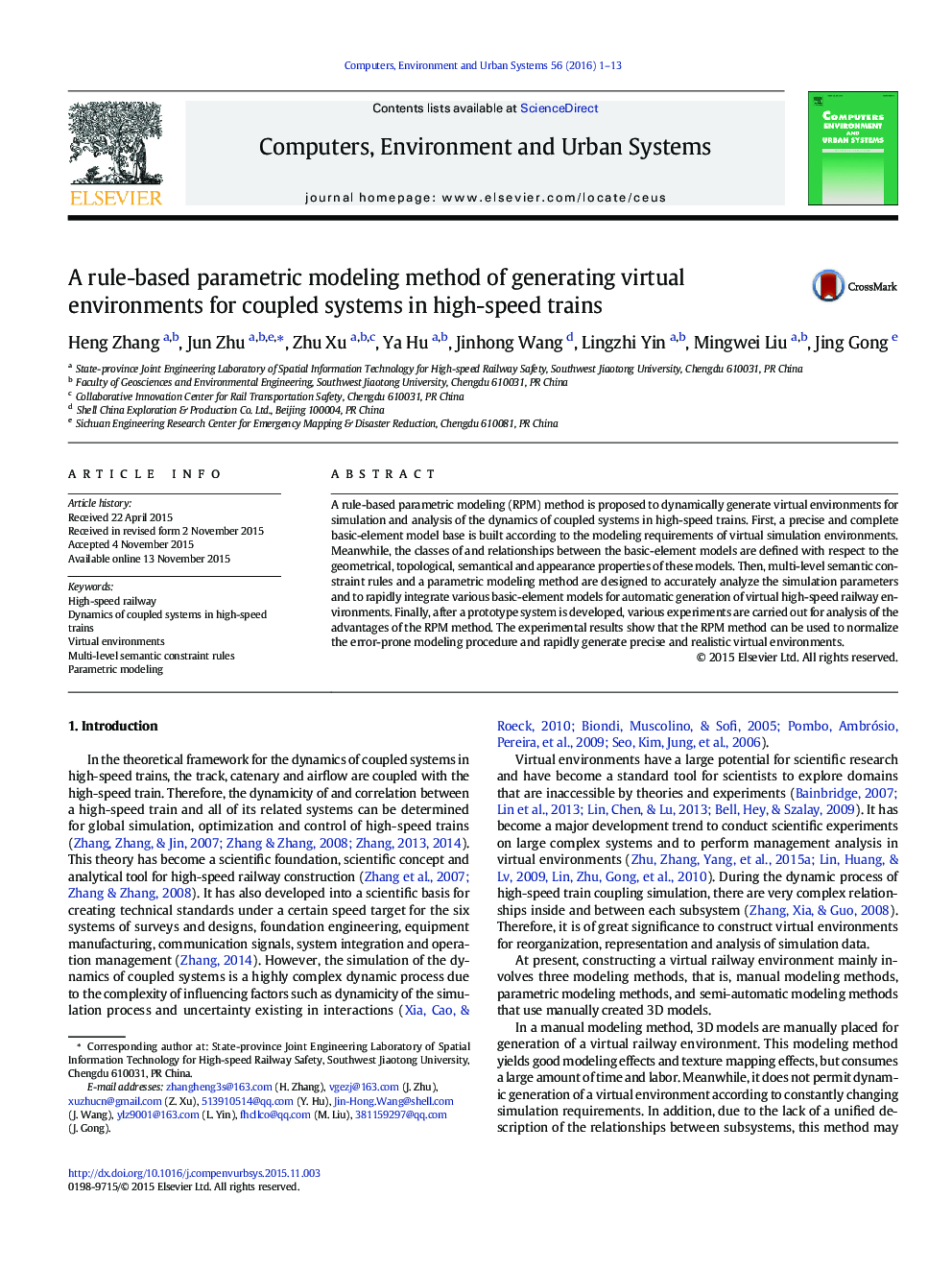| Article ID | Journal | Published Year | Pages | File Type |
|---|---|---|---|---|
| 506279 | Computers, Environment and Urban Systems | 2016 | 13 Pages |
•Basic-element models with semantic descriptions are shared and reused.•Multi-level semantic constraint rules automatically guide modeling operations.•Modeling operations and professional knowledge are decoupled.•Efficiency of dynamic modeling is increased for simulation environments.•Complexity and difficulty of multi-field collaborative modeling are reduced.
A rule-based parametric modeling (RPM) method is proposed to dynamically generate virtual environments for simulation and analysis of the dynamics of coupled systems in high-speed trains. First, a precise and complete basic-element model base is built according to the modeling requirements of virtual simulation environments. Meanwhile, the classes of and relationships between the basic-element models are defined with respect to the geometrical, topological, semantical and appearance properties of these models. Then, multi-level semantic constraint rules and a parametric modeling method are designed to accurately analyze the simulation parameters and to rapidly integrate various basic-element models for automatic generation of virtual high-speed railway environments. Finally, after a prototype system is developed, various experiments are carried out for analysis of the advantages of the RPM method. The experimental results show that the RPM method can be used to normalize the error-prone modeling procedure and rapidly generate precise and realistic virtual environments.
